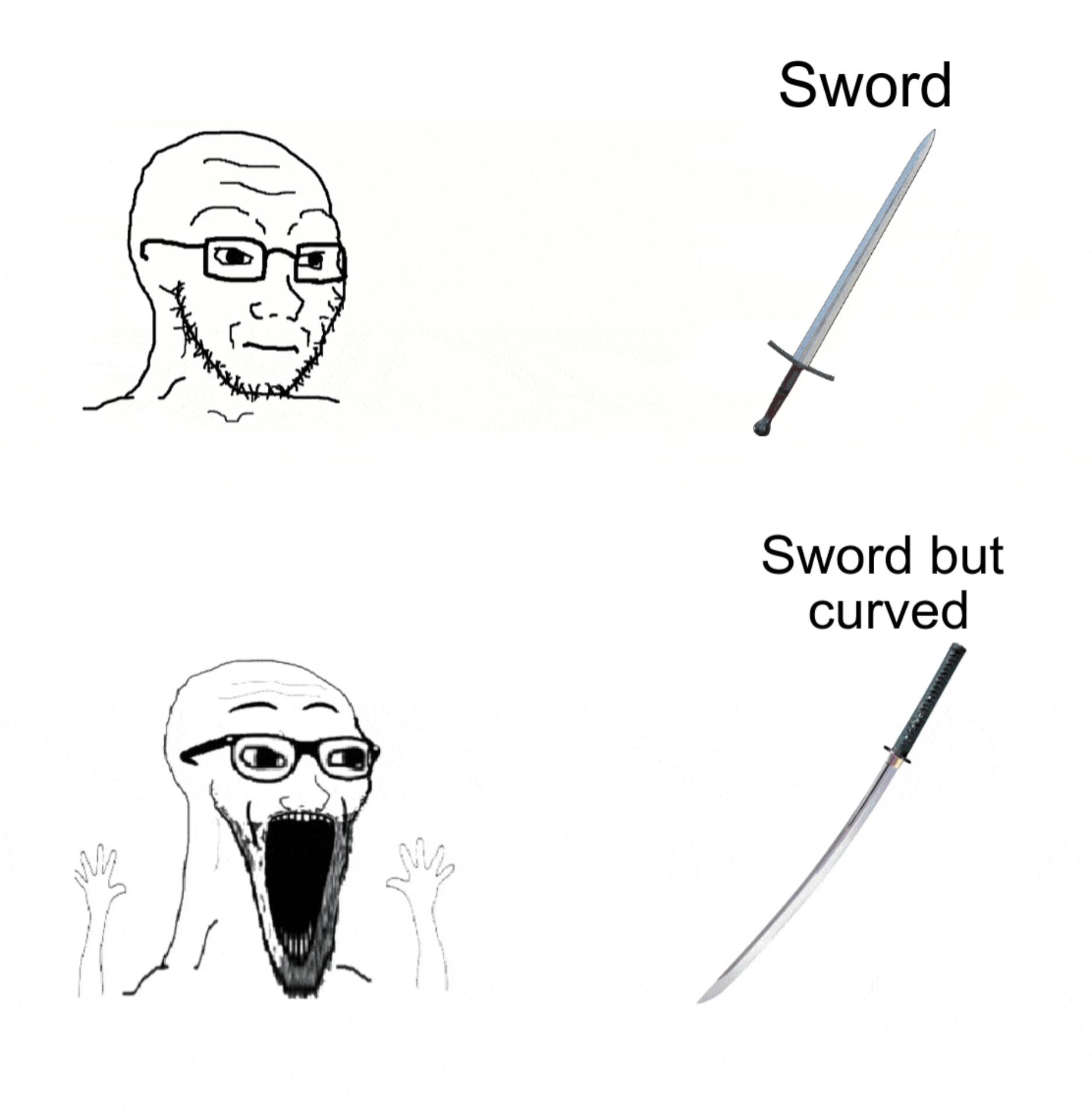this post was submitted on 27 Sep 2024
537 points (96.9% liked)
Memes
45688 readers
565 users here now
Rules:
- Be civil and nice.
- Try not to excessively repost, as a rule of thumb, wait at least 2 months to do it if you have to.
founded 5 years ago
MODERATORS
you are viewing a single comment's thread
view the rest of the comments
view the rest of the comments

The whole "Japanese steel was really weak" thing is as much of a myth as the whole "katanas are super powerful superior weapons" thing.
They're all just swords, and don't make that much of a difference either way.
Katana's are weak on the flat side. They aren't really meant to be used for parrying. In fact, most sword fights in Japan would be over after the first or second swing. It was commonplace to hold the grip of a katana but not draw it in such a way so that your enemy has trouble judging how long your katana is and what is a safe distance to be from you. Once your opponent is in range, draw it quickly and kill them in one blow, ideally.
The act of killing your opponent in a single blow is called "nukitsuke" from "nukiuchi" meaning "to cut down an opponent" and "tsuke" meaning "to stop an opponent's attack before it begins".
The Sekiro and popular media image of extended katana fights didn't really happen, but if they did, there would almost certainly be some broken katanas.
According to the dictionary, 抜き打ちnukiuchi and 抜き付けnukitsuke sound like synonyms. I'm a little confused.
I guess with uchi (to strike down) vs tsuke (to put, attach, etc) one sounds more like the result and the action but it's weird that the definitions from Jisho.org aren't too explicit.
I think because "nukiuchi" would be pronounced like "NOO-KEE-OO-CHEE" and "nukitsuke" would be pronounced like "NOO-KEE-SOO-KEE" so kind of similar. I dunno though!